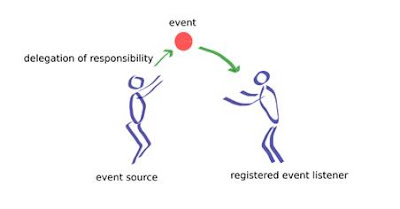Components of SOAP web service
Main components of SOAP web service
UDDI
·
It stands for Universal Description, Discovery and Integration
·
It is a directory
service which is kind of repository of all the web services.
·
All the web
services have to be registered with the UDDI and make them available for the discovery.
·
So anyone who
wants to use the service will go and search the UDDI and then start using that
service.
Web service description language (WSDL)
·
It’s an XML file which
describes the complete web service.
·
It includes the
details like end point, port number, method names, arguments, data types, communication
protocol, message format, security etc.
·
This is a
standard provided by W3C consortium and widely accepted for web services
description.
·
The WSDL file
has to be published publicly so that it helps the consumers to understand the
service and consume it.
WSDL contains below elements
Definitions
It is a root element in
WSDL file; it contains set of name space declarations which are used throughout the WSDL file.
Types
- Defines the data types used by the web service and they are specified by the XML schema.
- Types can be defined in a separate XSD file and then XSD file can be imported in the WSDL.
- The advantage of maintaining types in a separate XSD is that it can be reused across many WSDLs if required.
- We just need to import the XSD in the WSDL file.
Message
- It is the data that is being exchanged between service providers and consumers.
- It represents how the request and response should be.
Binding
- We need information like what protocol the web service is bound to and what is the message format it is using.
- So this information is bound to web service (specifically interface) using binding element in WSDL.
Operation
- Describes the action to be performed by the web service, it also contains the request and response for that action.
Service
- It describes the end point of the service, which is the address where the service is available.
Endpoint
- It describes the address of the web service in the network along with the associated protocol and messaging format.
Stub and Skeleton
· In any client
service communication, there will be lower level components which actually
helps the communication by performing some steps.
·
At client side, this low level component is called stub.
·
At server side, this low level component is called skeleton.
·
Client communicate with the stub, stub then invokes the actual service.
· And at the server
side, skeleton receives the request, understands it and then passes it to the actual service.
SOAP
· Simple Object Access Protocol is a XML specification for web services message format
and its communication over the network.
· So SOAP basically
describes message format and the transport method of a web service.
·
It allows the web
service to communicate using HTTP and XML
·
It encodes the messages in XML and hence it is more secure.



Comments
Post a Comment